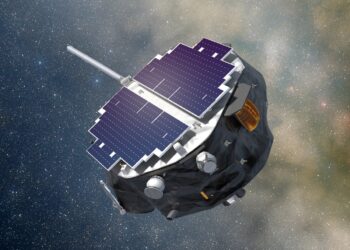WASHINGTON — In a mission targeted for 2025, a robot satellite in geostationary orbit around 22,000 miles above Earth will rendezvous with a military satellite and attempt to affix a new imaging sensor payload on the spacecraft.
The servicing vehicle — equipped with a robot arm developed by the Defense Advanced Research Projects Agency and the Naval Research Laboratory — will seek to connect the payload to the satellite’s launch adapter ring. This ring, which originally connected the satellite to its rocket during launch, will provide the attach point for an electro-optical imaging sensor payload developed by the startup Katalyst Space Technologies.
While conceptually straightforward, executing such delicate hardware upgrades on a multi-ton satellite constitutes a major technological challenge many years in the making, Ghonhee Lee, chief executive of Katalyst Space, told SpaceNews.
DIU selected startups
The satellite-upgrade effort is overseen by the Defense Innovation Unit (DIU) which selected the Pasadena, California-based startup Motiv Space Systems in 2022 to prototype satellite-servicing hardware for DIU’s “Modularity for Space Systems” program. DIU in January 2024 expanded the agreement to include Katalyst Space, based in Flagstaff, Arizona,
The Mission Robotics Vehicle (MRV) that will perform this mission is being built by Northrop Grumman’s subsidiary SpaceLogistics. The company under an agreement with DARPA is equipping the vehicle with two robot arms designed by NRL with DARPA funding.
Motiv Space, known for its space robotics expertise, is providing engineering support. Katalyst Space, which specializes in on-orbit servicing hardware, designed a “space domain awareness” sensor that gives a satellite greater visibility of its surroundings in the GEO belt, a crucial zone for military communications and reconnaissance spacecraft.
Katalyst is also supplying a “retrofit attachment system” to…
Read the full article here



